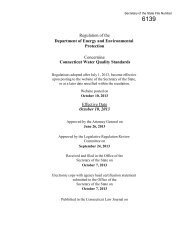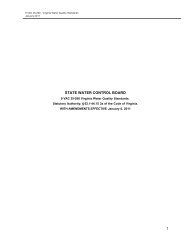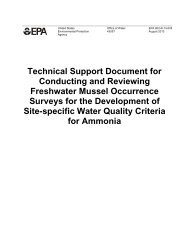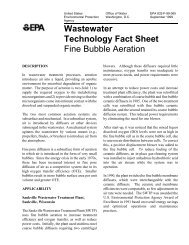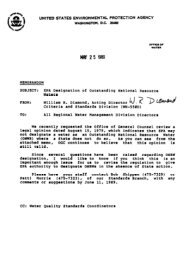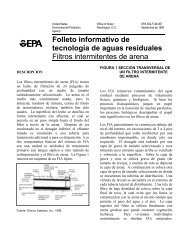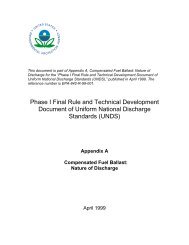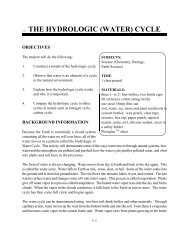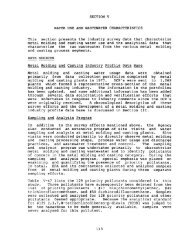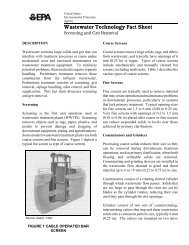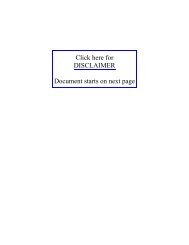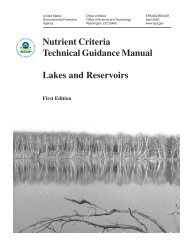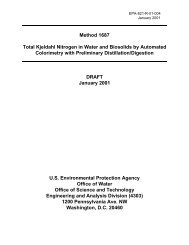Method 300.0, Rev. 2.1 - Water - US Environmental Protection Agency
Method 300.0, Rev. 2.1 - Water - US Environmental Protection Agency
Method 300.0, Rev. 2.1 - Water - US Environmental Protection Agency
You also want an ePaper? Increase the reach of your titles
YUMPU automatically turns print PDFs into web optimized ePapers that Google loves.
9.4.3 Until sufficient data becomes available (usually a minimum of 20-30<br />
analysis), assess laboratory performance against recovery limits for<br />
<strong>Method</strong> A of 80-120% and 75-125% for <strong>Method</strong> B. When sufficient<br />
internal performance data becomes available develop control limits<br />
from percent mean recovery and the standard deviation of the mean<br />
recovery.<br />
9.4.4 If the recovery of any analyte falls outside the designated LFM recovery<br />
range and the laboratory performance for that analyte is shown to be in<br />
control (Section 9.3), the recovery problem encountered with the LFM is<br />
judged to be either matrix or solution related, not system related.<br />
9.4.5 Where reference materials are available, they should be analyzed to<br />
provide additional performance data. The analysis of reference samples<br />
is a valuable tool for demonstrating the ability to perform the method<br />
acceptably.<br />
9.4.6 In recognition of the rapid advances occurring in chromatography, the<br />
analyst is permitted certain options, such as the use of different<br />
columns and/or eluents, to improve the separations or lower the cost of<br />
measurements. Each time such modifications to the method are made,<br />
the analyst is required to repeat the procedure in Section 9.2.<br />
9.4.7 It is recommended that the laboratory adopt additional quality<br />
assurance practices for use with this method. The specific practices that<br />
are most productive depend upon the needs of the laboratory and the<br />
nature of the samples. Field duplicates may be analyzed to monitor the<br />
precision of the sampling technique. When doubt exists over the<br />
identification of a peak in the chromatogram, confirmatory techniques<br />
such as sample dilution and fortification, must be used. Whenever<br />
possible, the laboratory should perform analysis of quality control<br />
check samples and participate in relevant performance evaluation<br />
sample studies.<br />
9.4.8 At least quarterly, replicates of LFBs should be analyzed to determine<br />
the precision of the laboratory measurements. Add these results to the<br />
on-going control charts to document data quality.<br />
9.4.9 When using Part B, the analyst should be aware of the purity of the<br />
reagents used to prepare standards. Allowances must be made when<br />
the solid materials are less than 99% pure.<br />
10.0 CALIBRATION AND STANDARDIZATION<br />
10.1 Establish ion chromatographic operating parameters equivalent to those<br />
indicated in Tables 1A or 1B.<br />
10.2 For each analyte of interest, prepare calibration standards at a minimum of<br />
three concentration levels and a blank by adding accurately measured volumes<br />
of one or more stock standards (Section 7.5) to a volumetric flask and diluting



